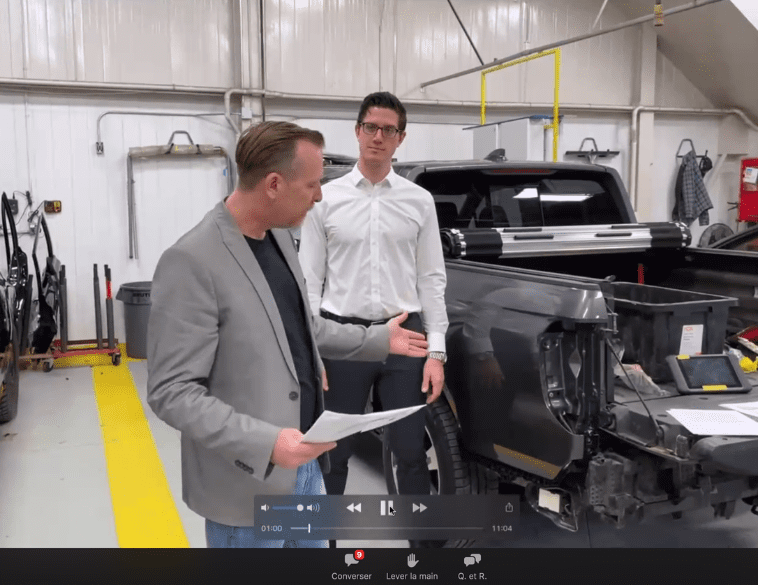In a technical training session hosted by the CCIF, two experts discussed the complexities of repairing cars with advanced driver assistance systems (ADAS).
In this technical webinar, David Friars, Director of Operations for CSN Drive auto Collision, and Nick Dominato, Senior Vice President of asTech, outlined three repair scenarios on a couple of vehicles.
To make the explanation even more interesting, the discussion took place in David Friars’ workshop, with the accident vehicles in question.
A simple crack in the rear of a 2019 Honda Ridgeline required the replacement of the bumper cover. Although the scanner indicated that the sensors were in good condition, a glance at Honda’s technical service bulletin made the team at the body shop realize that a blind spot sensor calibration needed to be performed.
“Finding out that this process is necessary adds time to the repair, says Dominato. Before sending the calibration to the dealership, the shop should consider whether they can do it themselves. It saves costs and time.”
A 360-degree vision
A more complex case came up with a 2020 Toyota Sienna, equipped with a 360-degree coverage system.
“It’s not all about the scanner,” Dominato states. “It’s a complex system and in this case, the collision was significant, requiring the front grille and bumper cover to be replaced, among other things. Sensors and cameras have to be removed to repair.”
“There is a process to make sure they are in the right place before we even talk about calibration. Again, you have to follow the technical information carefully. In fact, you have to look at the most recent versions, because the manufacturers’ processes for making repairs are always changing.”
Both experts mentioned that in some cases when a car is still drivable after a collision, certain driver assistance systems must be deactivated. If the impact has displaced a sensor, the ADAS will process the wrong information potentially putting the motorist at risk.
Questioning the analyzer
Again, the analyzer had not identified any ADAS on a 2016 Infiniti Q60. Yet on this vehicle which had only a slightly damaged door, a camera array provides a 360-degree view of the driver’s environment.
The door repair required calibration of the camera located in the mirror post. The calibration, detailed in the technical bulletin, could be carried out in the workshop with a minimum of equipment.
“Take the time to carefully review the technical bulletin for the vehicle you have in your hands, explains Friars. You’ll see the detailed steps for getting the various components of the ADAS systems in order.”
“In many cases, the shop can do it without having to invest $50,000 in equipment or sending it to the dealer.”



